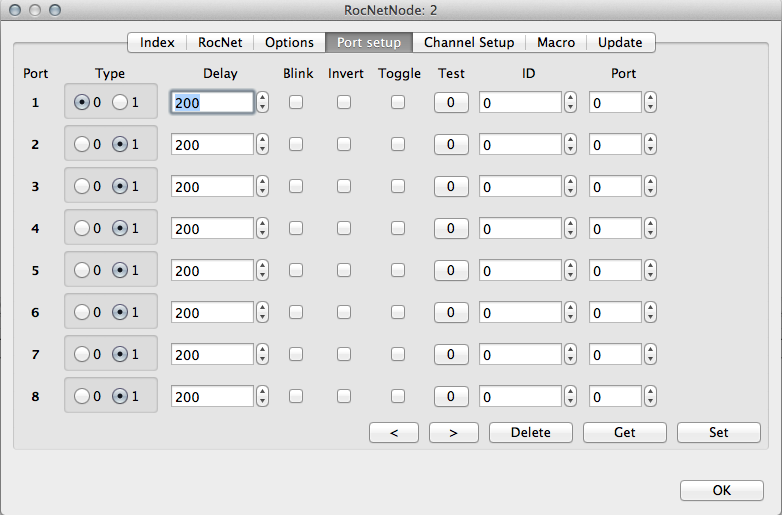
- #RASPBERRY PI ROCRAIL MAC OS#
- #RASPBERRY PI ROCRAIL UPDATE#
- #RASPBERRY PI ROCRAIL WINDOWS 10#
- #RASPBERRY PI ROCRAIL SOFTWARE#
- #RASPBERRY PI ROCRAIL DOWNLOAD#
Running trains manually or automatically is fully configurable. Rocrail can control a model train layout from one or more computers. Written in C/C++, it is based on the class library. La vitesse dans rocrail comme dans la centrale est sur 115200 bauds.
#RASPBERRY PI ROCRAIL MAC OS#
This reply was modified 1 year, 3 months ago by Nikos Lygizos. Rocrail is an Innovative Model Railroad Control System that runs on Linux, Mac OS X, Raspberry Pi and Windows. Especially from the MTC4PU “missing” commands, I think. Initially, is working great except some delayed actions. You will have to re-program all you MattzoControllers with the IP of this Raspberry Pi, unfortunately.
#RASPBERRY PI ROCRAIL UPDATE#
#RASPBERRY PI ROCRAIL DOWNLOAD#
#RASPBERRY PI ROCRAIL WINDOWS 10#
For the below installation I used a Windows 10 and a Centos VM but can be done with a Mac or just a linux system. Actually, I used the Raspberry Pi OS Lite and installed all necessary packages manually as the “Desktop” and “Recommended” images have a lot of applications, utilities etc.īy the way, the built below is headless (no keyboard, monitor nor mouse required). I do not use the NOOBS image because it is “bladed” with applications I will not need for running Rocrail on it. That means, Raspberry Pi! So I got me a RPi 4 with 4GB of memory and 32GB SD (Class 10). Print('Distance: centimeters'.I thought of “shrinking” the computer running Rocrail from a laptop/desktop to something the size of Altoids box!

Now, when we finally do get an input time, we can subtract the end time from the start time and calcuate distance: If we wind up wanting to change the pin placement in the future, we just need to modify a single variable rather than a bunch and risk making a mistake!Ībove, we go ahead and issue a signal out. We do this because we need to reference both pins multiple times. Here, we're going to define TRIG and ECHO as the Broadcom pin #'s that we intend to use for that part of the sensor. There is also a mixed operation that allows you to control some trains.
#RASPBERRY PI ROCRAIL SOFTWARE#
Your trains can be either manually controlled or completely controlled by the software in automatic mode. Rocrail allows train and tech lovers to control their model railroad and accessories completely. Same imports and initial mode as in the previous tutorial. Rocrail is a free application designed to control model train layouts. Now you can boot up the Raspberry Pi, create a new Python file, and let's setup the code: import RPi.GPIO as GPIO If you have a 2K resistor to go before ground, feel free to use that, I just didn't have any so I used 2 1K in series. The blue blobs with numbers on them are the resitors. The blue portion is the actual HC-SR04 sensor plugged in, and the colored-in boxes represent the M-F jumper wires by color plugged into these spots. Like before, the boxes represent pins on the Pi, and plugs on the breadboard. The power will be hooked up to the Raspberry Pi's 5V out pin, trigger will be assigned to a GPIO pin as output, echo will be assigned to a GPIO pin as input, and ground will go to a ground pin on the Pi. The distance sensor comes with 4 pins: power, trigger, echo, and ground.

Using the known constant that is the speed of sound, we can mathmematically determine the distance of any object in front of this sensor by simply measuring how much time passed while the sound waves were emitted, hit the object in front of the sensor, bounced back, and came back to the sensor. The HC-SR04 distance sensor measures distance based on emitting a sound burst, and timing how long it takes to receive the echo back.

In this tutorial, we're going to introduce a new sensor, the HC-SR04 ultrasonic distance sensor, along with handling GPIO input. Teil 1 zeigt den Download von Rocrail, und die Installation der Software fr die Digitale Modelleisenbahn.Auch fr Tablet Raspberry PI und Linux erhltlich.A. Hello and welcome to part 7 of the Raspberry Pi tutorial series.


 0 kommentar(er)
0 kommentar(er)
